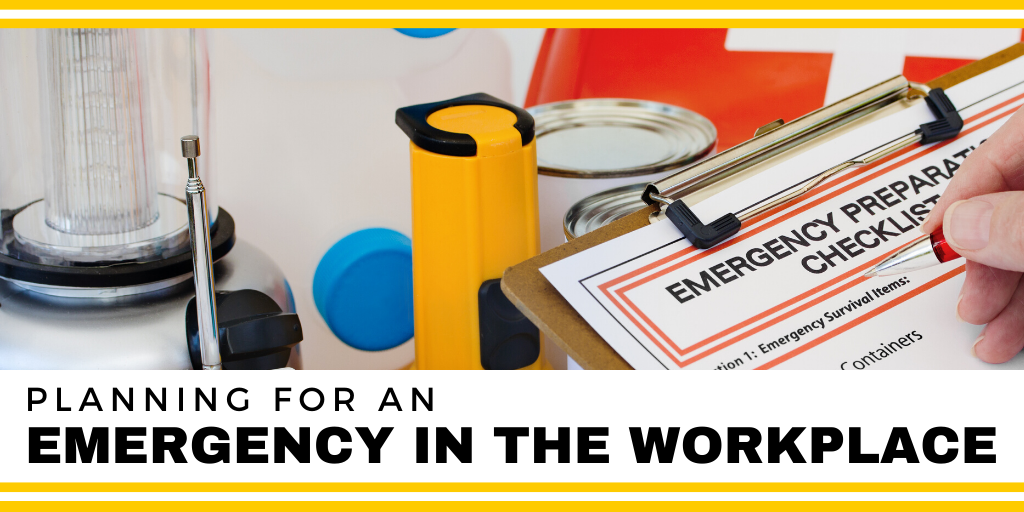According to WorkSafe WA, on average, approximately two Western Australian employees are injured seriously enough every hour to require one or more shifts off work. What is even more shocking is that a work-related fatality occurs every 22 days in WA (Department of Mines, Industry Regulation and Safety, 2019). Work-place injuries take a massive toll on the economy as a result of things like compensation and lost productivity. In the 2016-17 financial year, the median amount of compensation paid per workplace injury was $11,500 (SafeWork Australia, 2018). Safety is more than the financials though and put simply it bubbles down to the right that everyone has, to be able to return home from work safely. So how is this done, and what are some of the requirements involved? This Insight will focus on employer obligations for ensuring safety in the workplace, the steps to identify workplace hazards, prevention versus response, the requirements of an emergency plan and first aid.
Employer Obligations
Duty of Care is one’s obligation to take reasonable or appropriate care not to cause foreseeable harm to another. General duty of care is a term placed upon people (employers and employee) to ensure their safety and the safety of others in the workplace (Commission for Occupational Safety and Health, 2005). Most workplaces in Western Australia will adhere to the Occupational Safety and Health Act 1984 (OSH Act) to ensure they are providing a safe workplace.
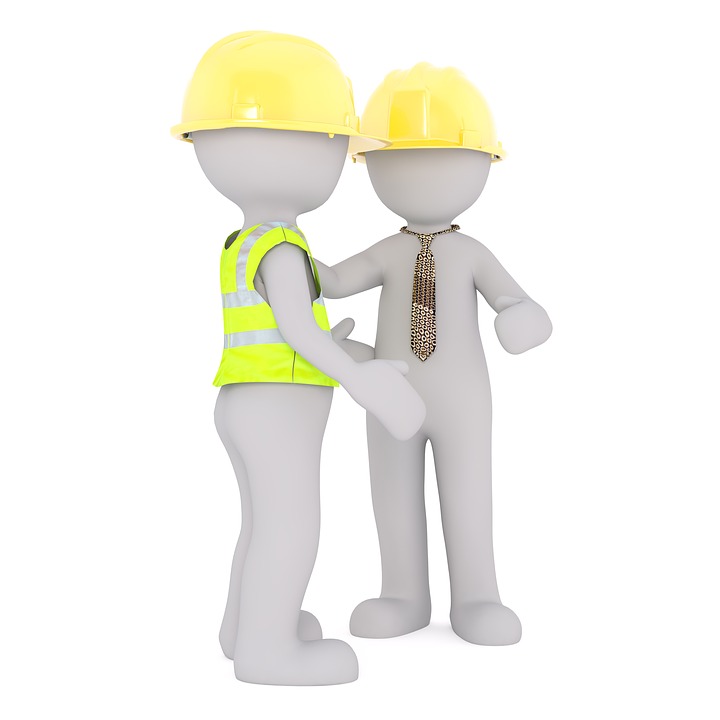
The OSH Act, along with the Occupational Safety and Health Regulations 1996, Australian standards and codes of practice (for specific activities) provide for the promotion, co-ordination, administration and enforcement of occupational safety and health in the workplace. While the OSH Act delegates responsibilities and duties to all levels of an organisation, below are some key obligations for employers:
- Provide and maintain workplaces (so far as practicable) so that employees are not exposed to hazards
- Provide information, instructions, training and supervision as necessary to enable employees to complete their work in a way that they are not exposed to hazards
- Consult and cooperate with safety and health representatives
- Provide adequate personal protective clothing and equipment as practicable to protect against hazards
It is recommended that employers should be familiar with their rights and responsibilities under the OSH Act. A copy can be obtained here.
Some industries must adhere to industry-specific legislation. Occupational Health and Safety in the mining industry is enforced through the Mine Safety and Inspection Act 1994 and Regulations (1995). A copy of the Act can be obtained from the Department of Mine, Industry Regulation and Safety (DMIRS) or www.legislation.wa.gov.au.
Hazard Identification
A hazard is anything that may result in injury or harm to the health of a person (Commission for Occupational Safety and Health, 2005). Hazard identification is a key aspect when preventing injuries from happening in the workplace and also when preparing an emergency plan.

Hazards can be identified in several ways. It is important to choose the best method of hazard identification for your workplace. Some suggestions include developing a hazard checklist, conducting walk-through surveys, reviewing information of products and equipment, analysing data of past incidents and work processes and consulting with employees (Commission for Occupational Safety and Health, 2005). Everyone within the organisation should be responsible for hazard identification and ensure hazards or incidents are reported.
Once the hazards have been identified it is important to assess them for risk so that a simple and effective system can be put in place to prevent their occurrence or to respond to emergencies when they do happen (Safe Work Australia, 2012b).
Prevention vs. Planning
All workplaces have known hazards. Prevention is concerned with managing the risk of hazards to prevent or minimise the likelihood of occurrence. Should an accident occur, most organisations will implement their emergency plan.
Prevention may be carried out using the Hierarchy of Control Measures. The most effective means of risk prevention is to eliminate the hazard. If this is not practical, you then try to minimise the risk by working through alternative options of the hierarchy. It is important to remember that the lower levels of the hierarchy are less effective as the hazard still exists (Safe Work Australia, 2018).
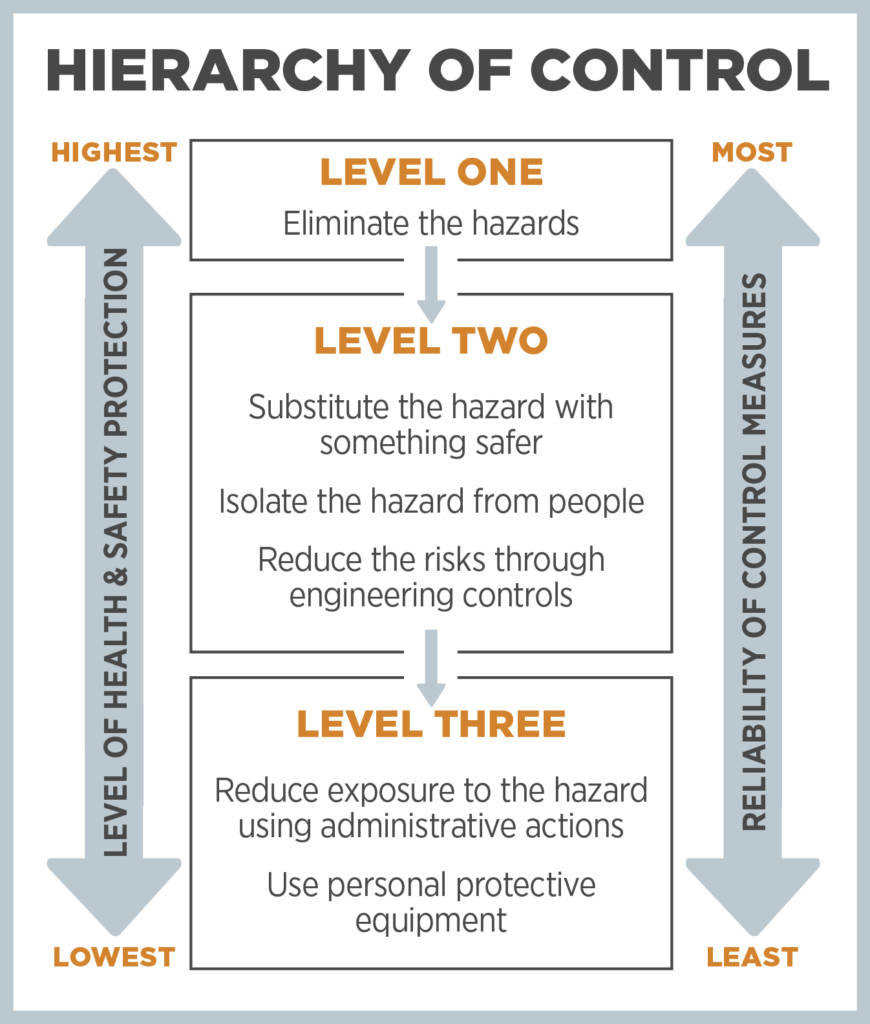
Requirements of an Emergency Plan
An emergency plan is utilised when hazard prevention fails. It is a written set of instructions detailing what needs to be done during an emergency (Safe Work Australia, 2012a), (DMIRS, 2020). It should include:
- details of an effective emergency response;
- evacuation procedures;
- company details such as details of general operations, responsible personnel and the number of workers;
- assign emergency response duties and provide details of appropriately qualified personnel (i.e. first aiders);
- contact details for emergency services or medical facilities or practitioners;
- information that is required to be communicated;
- the requirements and frequency of emergency drills or tests; and
- information and required training for workers who need to carry out the emergency procedures.
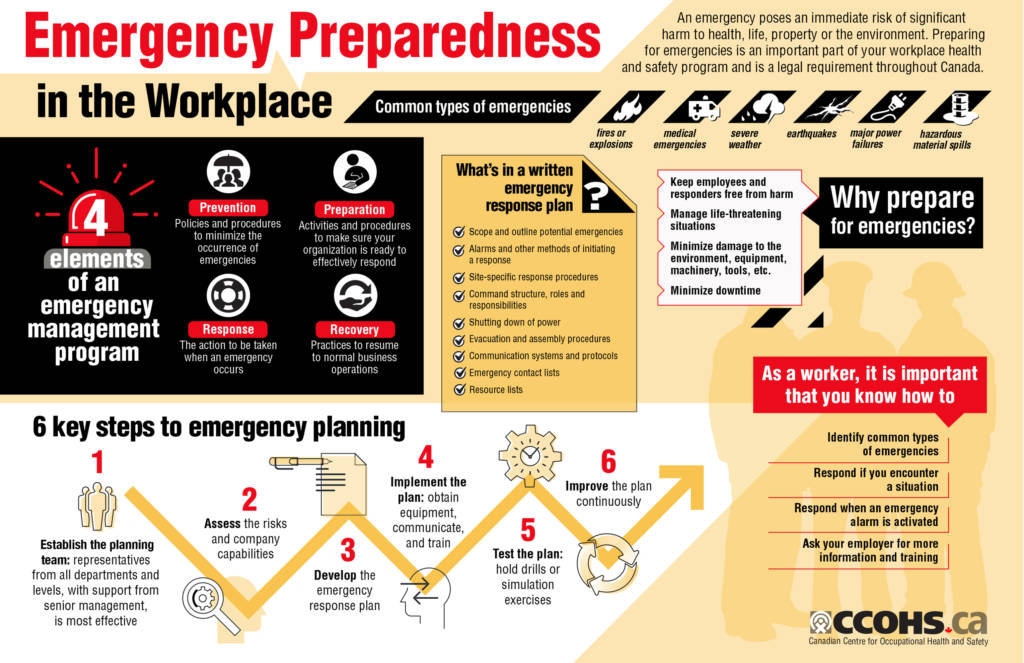
The most important aspect of an emergency plan is to ensure it is specific to your workplace, that it remains up to date and is easily accessible. Workers must be adequately trained to carry out emergency procedures, and it is recommended that emergency procedures are included in staff inductions, and training is regularly provided (Safe Work Australia, 2012a).
When evaluating your emergency plan, it may be useful to utilise some resources available via SafeWork Australia’s ‘Emergency response Code of Practice’ and DMIRS ‘Emergency response plan evaluation checklist’.
First Aid
Ensuring staff are adequately and appropriately trained is a must in any workplace. As mentioned earlier, standards and requirements associated with the emergency response should be detailed in the emergency plan.
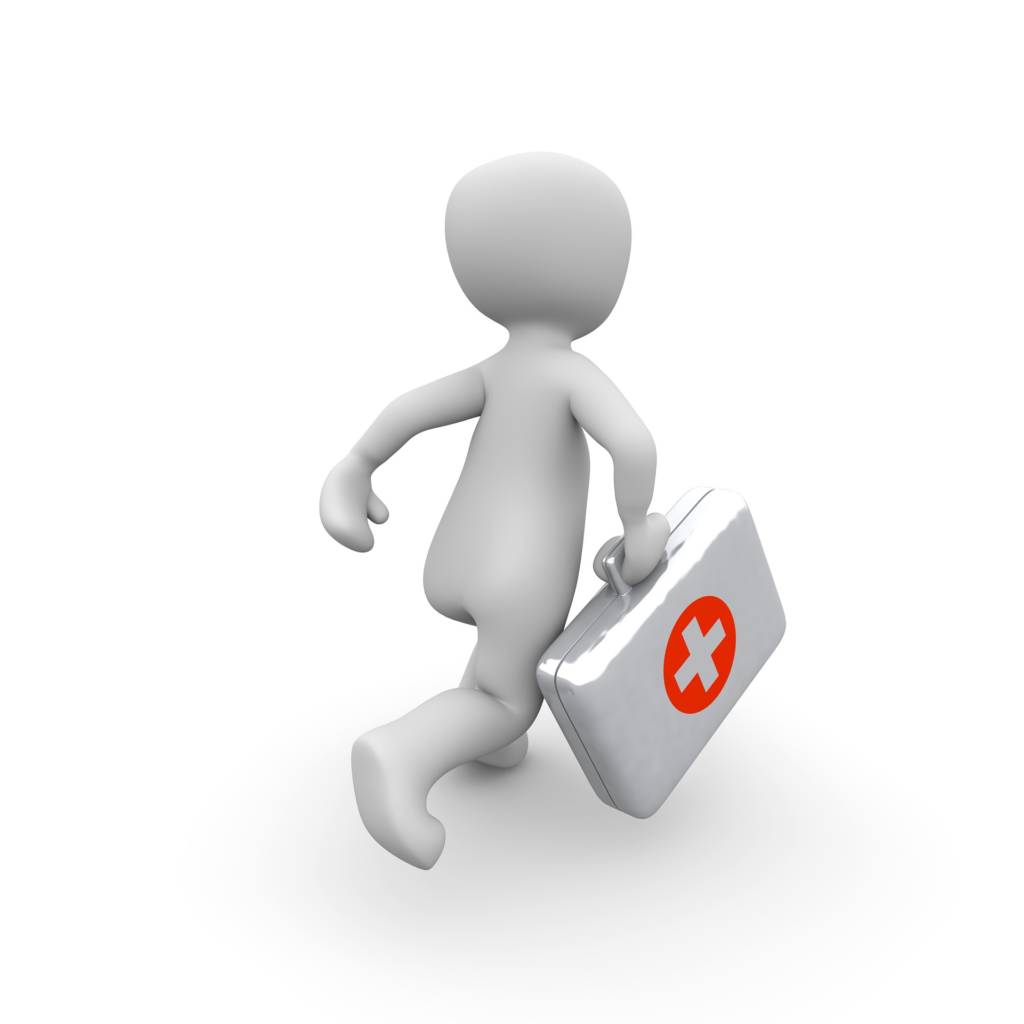
First aid training may be a requirement for some or all employees in the workplace, depending on the hazards and level of risk identified. As a rule of thumb, SafeWork Australia (2019) recommends one first aider for every 50 people in a low-risk workplace, 25 in a high-risk and 10 in a high-risk remote workplace (SafeWork Australia, 2019).
When considering your first aid obligations in the workplace, it is recommended that you have a look at the ‘Code of Practice for First Aid in the Workplace’. There are also several resources available about first aid at SafeWork Australia or St John.
Here at Integrate Sustainability,
we understand that managing safety and emergency planning in a small business
can be challenging, so if you need a hand or just want to ask some question,
please give us a call 08 9468 0338 or email
enquiries@integratesustainability.com.au
References
Canadian Centre for Occupational Health and Safety. (2020). Emergency Preparedness in the Workplace Infographic. Retrieved from https://www.ccohs.ca/products/posters/emergency/
Commission for Occupational Safety and Health. (2005). Guidance Note: General duty of care in Western Australian Workplaces.
Department of Mines, Industry Regulation and Safety. (2019, October). Work-related lost time injuries, diseases and fatalities in Western Australia. Retrieved February 2020, from WA key OSH statistics: https://www.commerce.wa.gov.au/sites/default/files/atoms/files/wa_keyosh_stats_2019.pdf
DMIRS. (2020). Developing emergency response plans. (I. R. Department of Mines, Producer) Retrieved February 7, 2020, from https://www.dmp.wa.gov.au/Safety/Developing-emergency-response-7933.aspx
Safe Work Australia. (2012a). Emergency Plans Fact Sheet.
Safe Work Australia. (2012b). Guide for Major Hazard Facilities Emergency Plans.
Safe Work Australia. (2017, August). Cost of injury and illness by state and territory. Retrieved February 2020, from https://www.safeworkaustralia.gov.au/statistics-and-research/statistics/cost-injury-and-illness/cost-injury-and-illness-state-and
Safe Work Australia. (2018). How to Manage Work Health and Safety Risks.
SafeWork Australia. (2018). Work-related injury and disease – Key WHS statistics Australia 2018. Retrieved from https://www.safeworkaustralia.gov.au/book/work-related-injury-and-disease-key-whs-statistics-australia-2018
SafeWork Australia. (2019). First Aid. Retrieved February 9, 2020, from https://www.safeworkaustralia.gov.au/first-aid
SafeWork NSW. (2020). Managing extreme heat at your workplace. Retrieved from https://www.safework.nsw.gov.au/hazards-a-z/working-in-extreme-heat/content-page-blocks/managing-extreme-heat-at-your-workplace

